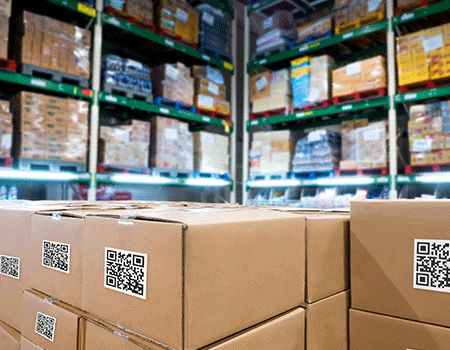Inventory System
The implementation of a comprehensive integrated inventory system may very well be one of the most important decision a business makes. While a business can sustain operations on spreadsheets initially, they prevent growth and obscure the truth as they are just departmental islands of information and offer no way to deliver an integrated view of the business.
If you want to be an integrated business, you need an integrated system, and then you will have a solid foundation for growth.
An integrated system is based on software, and it delivers a platform for growth, data uniformity, and yet supports every department in achieving their local business objectives.
There are three different types of inventory systems available – manual, periodic and perpetual. The one that is most suitable for your business depends on the size of your business and industry. If you sell very few products, you might do just find with a periodic system which is updated when a physical inventory is performed. If you carry a wide variety of products and large volume, you stand a much better chance of having accurate data if your system is perpetual.
Some software will limit your flexibility; SOS Inventory was designed for small businesses to smoothly transition from manual inventory management supported by spreadsheets and provides features for both periodic and perpetual inventory methods.
SOS Inventory – A Simple Inventory System for Small Business
Entrepreneurs and small business owners managing inventory on spreadsheets can do so successfully only for a time. Trying to run a business with multiple versions of the truth makes life, and decision making difficult. Sooner or later, they will see the merit of migrating to a simple to use integrated inventory management system such as SOS.
In SOS, tracking inventory begins with barcode scanning as an efficient way to log all product information quickly and accurately, ranging from size, color, ingredients, expiration date, allergens and more. Upon arrival at the loading dock, product information can be scanned directly into SOS Inventory software where the information will be synchronized across departments, locations, and even financial platforms such as QuickBooks Online.
How SOS Inventory Accommodates Both Inventory Systems
 The main goal of any inventory management system is to optimize inventory so you carry sufficient quantities to satisfy demand, but not more. This is a careful balancing act with many moving parts. SOS Inventory was designed to manage this equilibrium for any business that creates, buys, or sells products.
The main goal of any inventory management system is to optimize inventory so you carry sufficient quantities to satisfy demand, but not more. This is a careful balancing act with many moving parts. SOS Inventory was designed to manage this equilibrium for any business that creates, buys, or sells products.
There are two distinctly different inventory system types and the one you choose really depends on the volume of product you move and your resources for conducting a physical inventory account. The differences are as follows:
What is the Periodic Method of Tracking Inventory?
In a periodic system, inventory counts are performed periodically as the name implies. This could be at the end of the month and again at the end of the year. Businesses that conduct their inventory counts this way must usually stop production and other business functions to take product off the shelves and log every item. Once the physical inventory audit is completed, data is updated across the system. Inventory totals and costs can change, waste is identified and the difference in the physical count to the recorded count can be reconciled.
What is the Perpetual Method of Tracking Inventory?
The perpetual inventory system updates inventory counts on a regular basis – it is a continuous inventory system. The update can occur upon scanning a barcode or the detection of RFID tags. When a kit or assembly is created in production, its components are removed from inventory. And when a sale takes place, inventory is removed from the inventory count. When a product is returned, that item is returned to the inventory. No matter the software user’s point of view, the data is unified; it the same across all departments as SOS is a centralized data system. Whether accessing it from multiple locations, as a production manager or as CFO, the data is uniform even when the user’s modules vary according to business role.
 For small businesses, sophisticated ERP software with multi-faceted functionality is desirable but usually far out of reach with a price tag in the tens of thousands of dollars. SOS offers high levels of functionality at affordable prices (under $33 per seat per month). While there are other low-end inventory software solutions, they cannot touch the capabilities of SOS. SOS Inventory customers are surprised by the high-end functionality within their reach, supported by stellar levels of customer service and support.
For small businesses, sophisticated ERP software with multi-faceted functionality is desirable but usually far out of reach with a price tag in the tens of thousands of dollars. SOS offers high levels of functionality at affordable prices (under $33 per seat per month). While there are other low-end inventory software solutions, they cannot touch the capabilities of SOS. SOS Inventory customers are surprised by the high-end functionality within their reach, supported by stellar levels of customer service and support.
If you’re a small business owner looking to make a change that will manage every detail of inventory control without sacrificing functionality, SOS Inventory is the inventory system you need to become more profitable while maintaining high quality.






